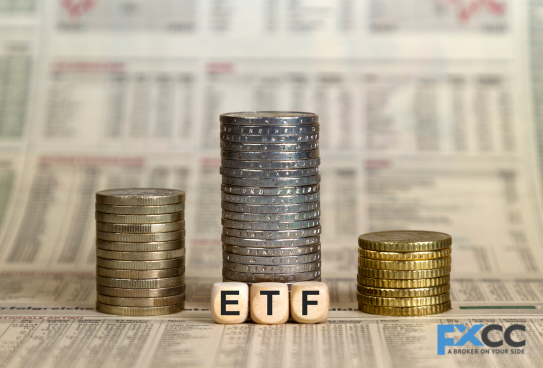Exchange-Traded Funds (ETFs) have become a pivotal part of modern investment strategies. They provide a flexible and cost-effective way for both novice and seasoned investors to diversify their portfolios and enhance returns. Let’s dive into how ETFs can revolutionize your approach to investing.
Introduction
ETFs have gained popularity due to their versatility, cost-effectiveness, and ease of use. They cater to various investor needs, whether you’re just starting or have years of experience. But what exactly are ETFs, and how can they significantly impact your investment strategy?
What are ETFs?
ETFs, or Exchange-Traded Funds, are investment funds that trade on stock exchanges similar to individual stocks. They contain a mix of assets like stocks, bonds, or commodities and are designed to track the performance of a specific index or sector. Investing in an ETF means you are buying a portion of a diversified portfolio.

Benefits of Investing in ETFs
Diversification
ETFs offer immediate diversification by holding a broad range of assets within one fund. This helps reduce the risk associated with investing in single stocks.
Low Cost
ETFs generally have lower expense ratios than mutual funds, making them an affordable option for many investors.
Flexibility
You can buy and sell ETFs throughout the trading day at market prices, which provides greater liquidity compared to mutual funds.
Transparency
ETFs disclose their holdings daily, so investors always know what assets are included in the fund.
Types of ETFs
Stock ETFs
These ETFs invest in a variety of stocks and aim to mirror the performance of a specific index, such as the S&P 500.
Bond ETFs
Bond ETFs include different types of bonds, offering exposure to government, corporate, or municipal bonds.
Commodity ETFs
These funds invest in physical commodities like gold, silver, or oil, allowing investors to speculate on commodity prices without owning the physical asset.
Sector and Industry ETFs
These ETFs focus on specific sectors or industries, such as technology or healthcare, providing targeted investment opportunities.

How to Choose the Right ETF
Define Your Investment Goals
Determine what you want to achieve with your investment. Are you seeking growth, income, or capital preservation?
Consider the Expense Ratio
Lower expense ratios mean more of your investment remains in the fund rather than going towards fees.
Examine Performance
Look at the ETF’s historical performance and how well it tracks its underlying index.
Assess Liquidity
Choose ETFs with higher trading volumes to ensure easy buying and selling of shares.
Building a Diversified Portfolio with ETFs
Core-Satellite Approach
Use a broad-market ETF as the foundation of your portfolio and supplement it with sector-specific ETFs to achieve targeted growth.
Global Diversification
Incorporate international ETFs to spread your investments across different economies, reducing regional risk.
ETFs vs. Mutual Funds: A Comparison
Cost
ETFs generally have lower expense ratios and no load fees, making them more cost-effective.
Trading Flexibility
ETFs can be traded throughout the day, providing more opportunities to respond to market changes.
Tax Efficiency
ETFs tend to be more tax-efficient due to their unique creation and redemption process.
The Role of ETFs in Retirement Planning
ETFs can be a crucial component of a retirement plan, offering diversified, low-cost options that grow your retirement savings over time. By including a mix of stock, bond, and international ETFs, you can build a balanced retirement portfolio.
Tax Efficiency of ETFs
ETFs are known for their tax efficiency. Due to their structure, capital gains taxes are minimized, which is advantageous for investors who are mindful of tax implications.
Common ETF Investment Strategies
Buy and Hold
This strategy involves purchasing ETFs and holding them over a long period, benefiting from market growth.
Dollar-Cost Averaging
Investing a fixed amount in ETFs at regular intervals can help mitigate the impact of market volatility.
Sector Rotation
Move investments between different sector ETFs based on economic cycles and market trends.
Risks and Considerations
Market Risk
Like all investments, ETFs are subject to market risk and can lose value.
Tracking Error
ETFs may not perfectly replicate the performance of their underlying index, leading to a tracking error.
Liquidity Risk
While most ETFs are highly liquid, some niche ETFs may have lower liquidity, making them harder to trade.
How to Get Started with ETF Investing
- Educate Yourself: Learn about the basics of ETFs and how they function.
- Open a Brokerage Account: Select a brokerage that offers a wide variety of ETFs.
- Start Small: Begin with a modest investment and gradually increase as you become more comfortable.
- Monitor Your Investments: Regularly review your portfolio and make adjustments as necessary.
Conclusion
ETFs offer a unique way to enhance your investment strategy through diversification, flexibility, and cost-efficiency. By understanding how to select and utilize ETFs effectively, you can build a robust portfolio that aligns with your financial goals. Start exploring the world of ETFs today to take control of your investment future.


